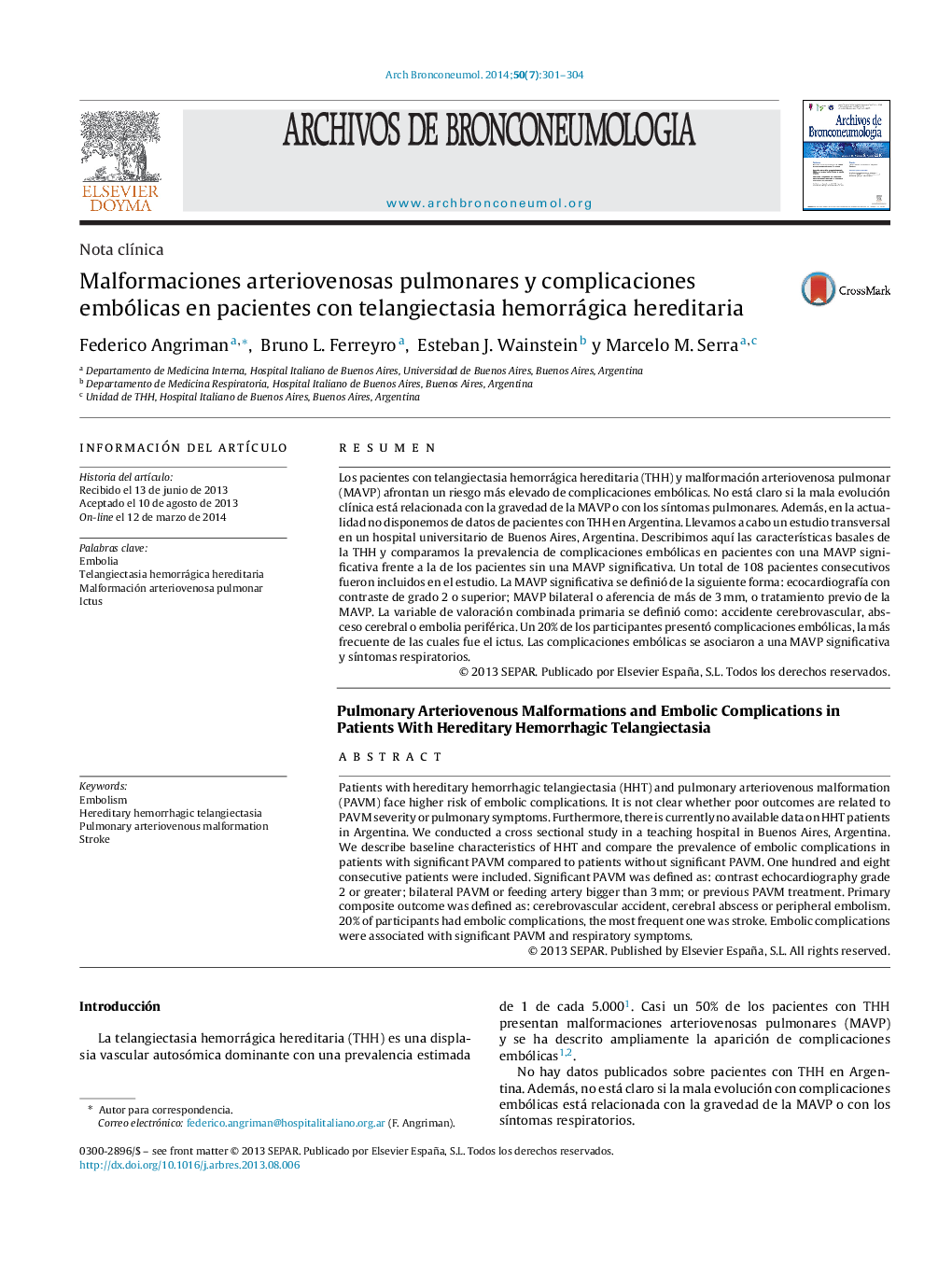| Article ID | Journal | Published Year | Pages | File Type |
|---|---|---|---|---|
| 4203432 | Archivos de Bronconeumología | 2014 | 4 Pages |
Abstract
Patients with hereditary hemorrhagic telangiectasia (HHT) and pulmonary arteriovenous malformation (PAVM) face higher risk of embolic complications. It is not clear whether poor outcomes are related to PAVM severity or pulmonary symptoms. Furthermore, there is currently no available data on HHT patients in Argentina. We conducted a cross sectional study in a teaching hospital in Buenos Aires, Argentina. We describe baseline characteristics of HHT and compare the prevalence of embolic complications in patients with significant PAVM compared to patients without significant PAVM. One hundred and eight consecutive patients were included. Significant PAVM was defined as: contrast echocardiography grade 2 or greater; bilateral PAVM or feeding artery bigger than 3Â mm; or previous PAVM treatment. Primary composite outcome was defined as: cerebrovascular accident, cerebral abscess or peripheral embolism. 20% of participants had embolic complications, the most frequent one was stroke. Embolic complications were associated with significant PAVM and respiratory symptoms.
Keywords
Related Topics
Health Sciences
Medicine and Dentistry
Pulmonary and Respiratory Medicine
Authors
Federico Angriman, Bruno L. Ferreyro, Esteban J. Wainstein, Marcelo M. Serra,
